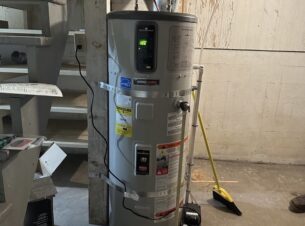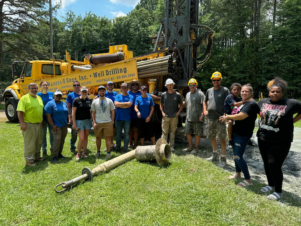Ontario, Calif. —The 2019 editions of the California Plumbing Code (CPC®) and California Mechanical Code (CMC®) have been formally released. Both the hardcopy and eBook versions, viewable on computers, tablets and smart phones, can be purchased and downloaded via the IAPMO web store at www.iapmo.org.
The 2019 editions of the CPC and CMC represent the most current approaches in the plumbing and mechanical fields. These codes are embedded with the 2018 editions of the Uniform Plumbing Code (UPC®) and Uniform Mechanical Code (UMC®) with the California amendments. They mark the sixth editions developed under the American National Standards Institute (ANSI) accredited process. Contributions to the content of these codes were made by every segment of the built industry, including such diverse interests as consumers, enforcing authorities, installers/maintainers, labor, manufacturers, research/standards/ testing laboratories, special experts, and users.
The CPC is designed to provide consumers with safe and sanitary plumbing systems while, at the same time, allowing latitude for innovation and new technologies. Key changes to the 2019 CPC include:
- New sound transmission provisions for plumbing piping systems (Chapter 3)
- New product standards for such plumbing fixtures as wall hung fixtures, waste fittings, lavatories, showers, bathtubs and whirlpool bathtubs, flushometer valves, sinks, and eyewash stations; and signage for single use toilet facilities (Chapter 4)
- New provisions for connector capacities for elbows in connectors and clearance of appliances and their connectors to combustible materials (Chapter 5)
- New backflow protection provisions for chemical dispensers; new material provisions for pipes, tubes, fittings and joint methods for water supply and distribution; and new pressure testing for the hot and cold-water supply system (Chapter 6)
- New materials requirements for drain, waste, vent pipe, and fittings (Chapter 7)
- New provisions for trap seal primers for potable water supply (Chapter 10)
- New provisions for engineered storm drainage systems (Chapter 11)
- New requirements for protection against corrosion of steel pipe and steel tubing for fuel gas systems, overpressure protection of fuel gas systems, and provisions for gas piping installation for fuel gas piping systems (Chapter 12)
- New requirements for medical gas and vacuum systems based on the latest edition of NFPA 99 (Chapter 13)
- New peak water demand method and calculator for estimating demand loads for water supply of single- and multi-family dwellings with water conserving plumbing fixtures, fixture fittings, and appliances (Appendix M)
The CMC provides complete requirements for the installation and maintenance of heating, ventilating, cooling, and refrigeration systems, while at the same time allowing latitude for innovations and new technologies. Key changes to the 2019 CMC include:
- New clearance requirements for solid-fuel burning appliances, ducts serving Type I hood exhaust system, and product conveying ducts (Chapter 3)
- New provisions for Type I and Type II exhaust systems and product conveying ducts (Chapter 5)
- New sizing provisions for duct systems; duct leakage testing requirements; installations and closure requirements for flexible air ducts; and new provisions for air dispersion systems (Chapter 6)
- New requirements for pressure regulators and electric furnaces (Chapter 9)
- New refrigerant system requirements, such as A2L and B2L low flammability refrigerants; machinery room requirements such as access, openings, detectors, and ventilation systems; and new pressure limiting-device provisions for compressors (Chapter 11)
- New pressure testing requirements for piping and components, expansion tanks, and materials for hydronic systems (Chapter 12)
- New requirements for piping material, overpressure protection, and gas piping installation for fuel gas piping systems (Chapter 13)



